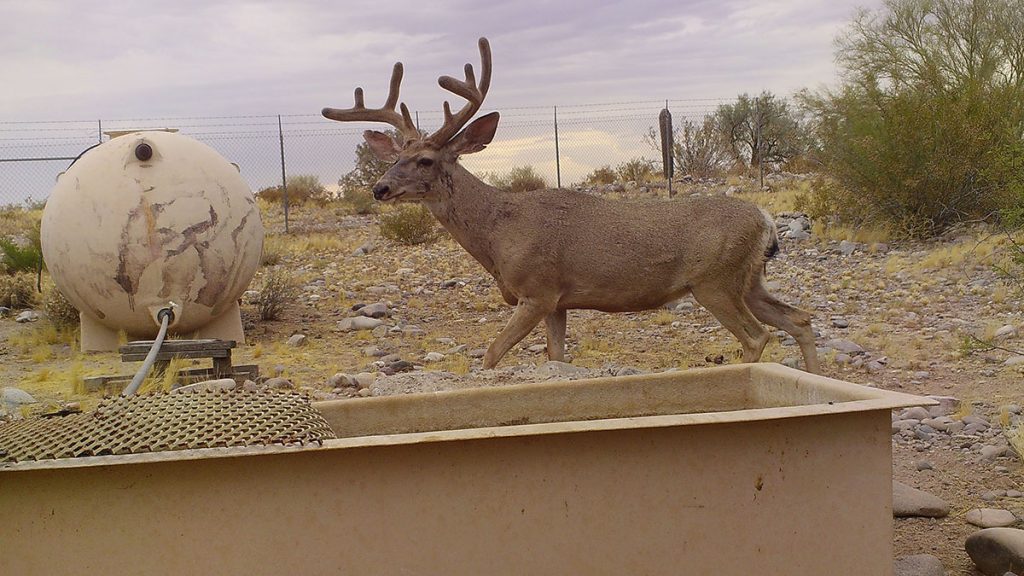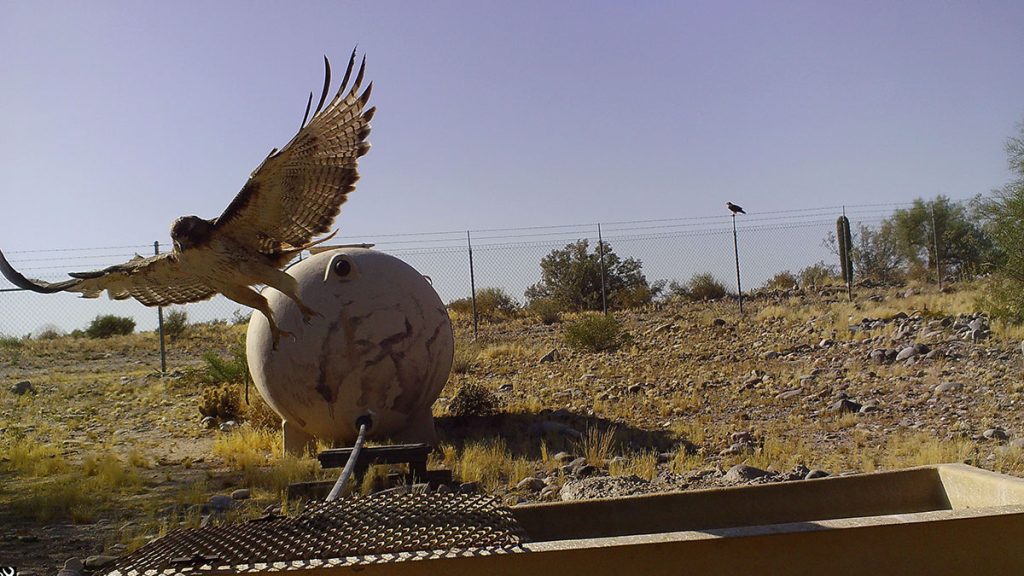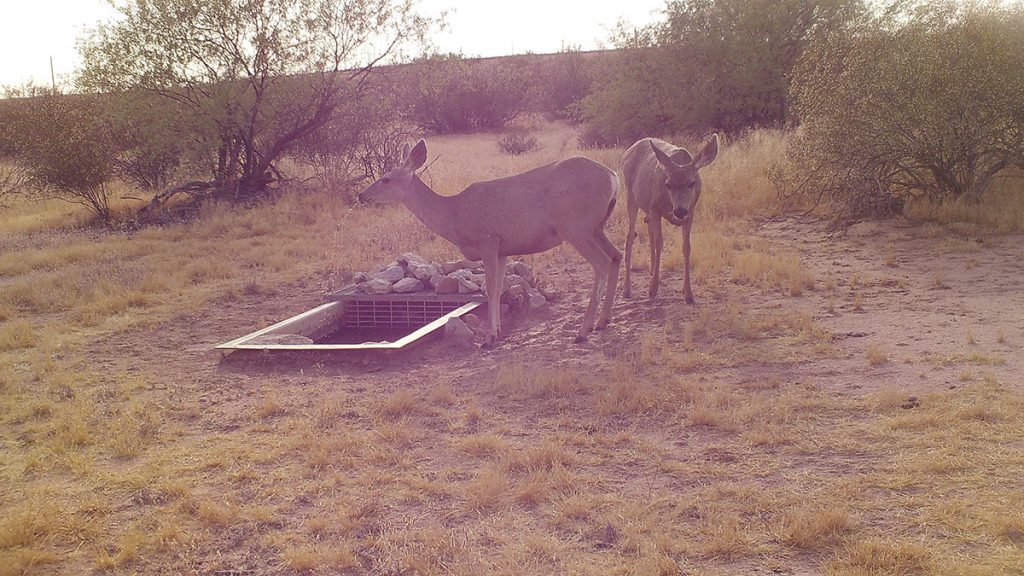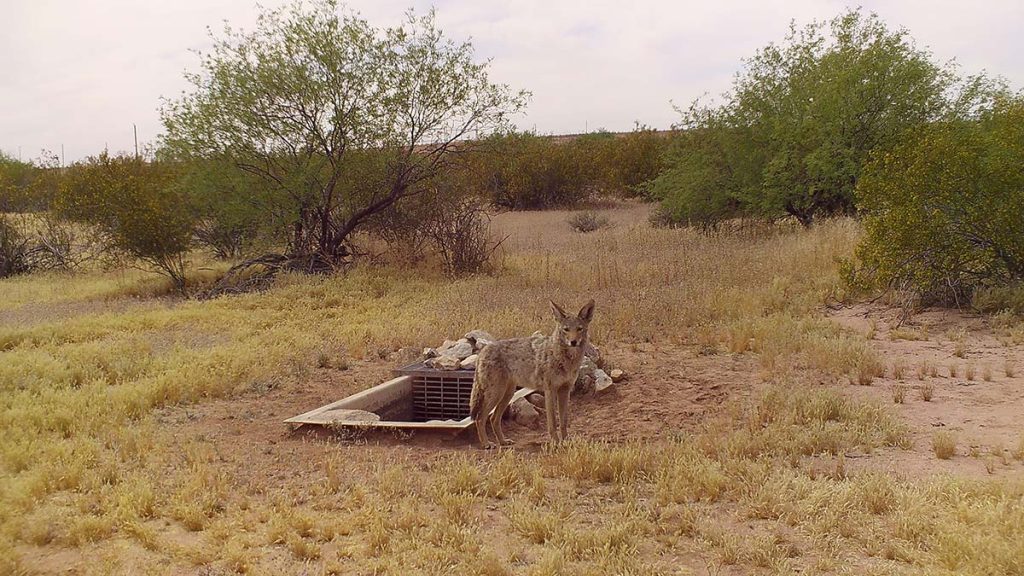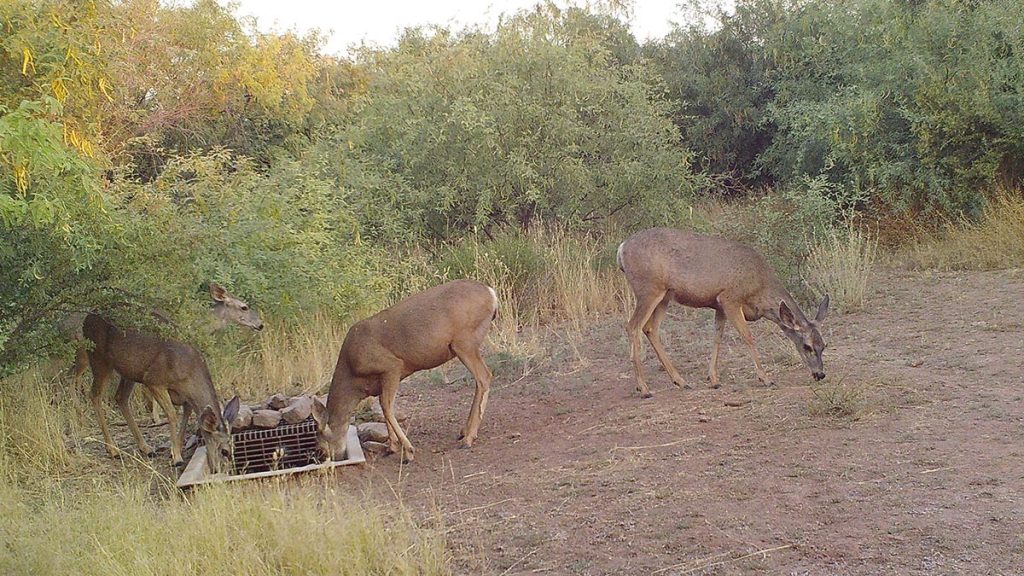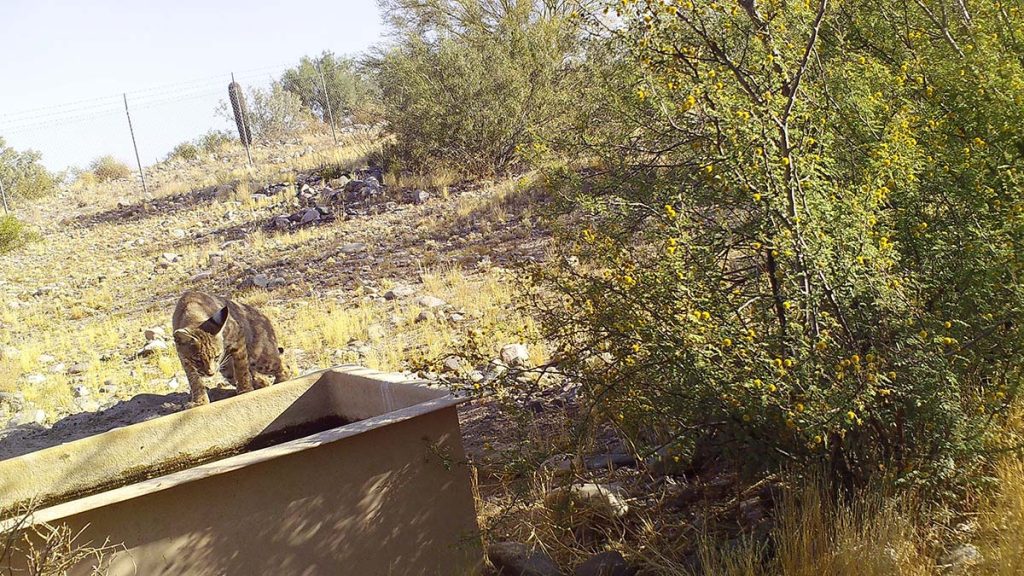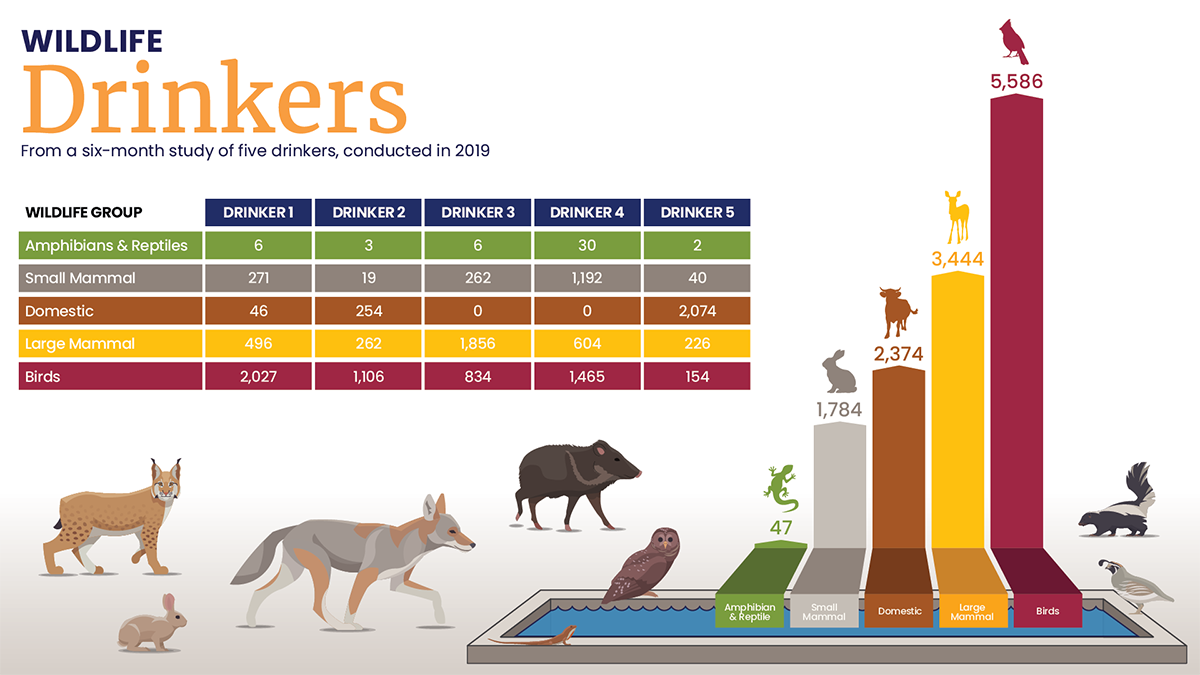
You may know that CAP delivers water to 80% of Arizona’s population, but you probably don’t know that we also provide water for Arizona’s wildlife.
Environmental impact studies conducted prior to construction of the system indicated that as the canal crossed the state, it created a man-made barrier that could impact wildlife’s access to natural waters. The solution? Install wildlife drinkers to ensure access to fresh water.
In 2019, CAP Senior Biologist Scott Bryan conducted a six-month study to evaluate usage of five drinkers so maintenance could be scheduled appropriately.
Of the five drinkers he studied, four have holding tanks that must be filled periodically by a water truck; two have tanks above ground and two have tanks below ground. The fifth drinker is fed directly from the Black Mountain Operating Reservoir with an on-demand pump and float system.
Bryan utilized day/night trail cameras to record visits and characterize usage. The results are impressive!
During the six months, photos captured 13,260 unique visits from wildlife representing 50 different species. There were some interesting differences Bryan noted between the different drinkers.
Visits to Drinker 1, located adjacent to the Gila River, were dominated by bird species, as more than 71% of the visits were by 23 different bird species. Mule deer and coyotes were more frequent visitors to the water tank than other non-bird wildlife species.
Birds also topped visit list at Drinker 2, with 66.8% of the wildlife visits from feathered friends. Mule deer and coyotes were also frequent visitors to the water tank, but cattle made up 15.8% of the visits.
Drinker 3 is near a wash that was wetted on various occasions throughout the evaluation period, so visits were expected to be lower than other drinkers. However, it had the second-most visits of all the drinkers. Peccary (javelina) were the most prominent of all wildlife species, making up 41.7% of the visits with birds coming in at 28.1%.
Drinker 4 is the most wide-open of the drinkers and 44.5% of its visits were bird species. Jackrabbits were the most frequent non-bird visitors, followed by peccary and coyote.
Drinker 5 is located near ranches and the cattle used the drinker heavily, which likely discouraged wildlife from using the drinker. Cattle accounted for 82.9% of the total number of visits followed by birds at 6.2% and coyotes at 4.6%.
The conclusion? The 20+ year drought has an effect on all of us. Just as the people of Arizona are facing water supply issues, so are the wildlife. The short-term monitoring study confirms that the drinkers installed along the canal provide a reliable source of fresh water for Arizona’s wildlife and are an integral piece in the survival strategies for these animals. Ensuring that these drinkers are operating correctly is a critical function for our maintenance crews, and one that they take extreme pride in to protect the future of our diverse wildlife community.


